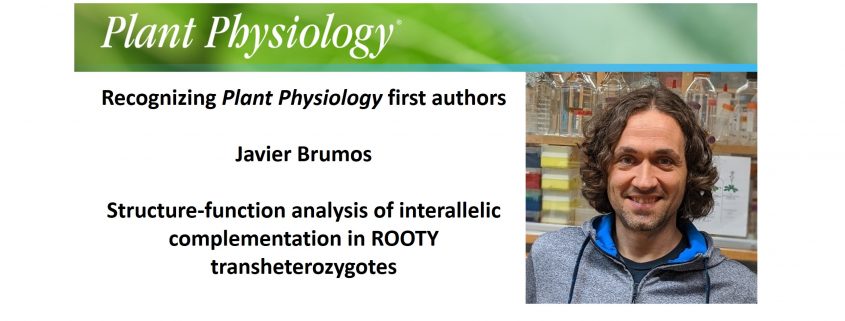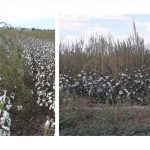Recognizing Plant Physiology authors: Javier Brumos
Javier Brumos, first author of Structure-function analysis of interallelic complementation in ROOTY transheterozygotes
Current Position: Research Scholar in the Alonso-Stepanova laboratory, Department of Plant and Microbial Biology, Program in Genetics, North Carolina State University, Raleigh, NC, USA
Education: B.S. Agronomy, Polytechnic University of Valencia, Spain; Ph.D. Biotechnology, Polytechnic University of Valencia, Spain
Non-scientific Interests: outreach activities, nature, camping, hiking, biking, photography, music, soccer
Brief bio: I was born and raised in Albuixech, a small village in the countryside of Valencia, Spain. Living in a farming region, I developed at a young age a passion for plants that led me to study Agronomical Engineering at the Polytechnic University of Valencia. In graduate school, I employed functional genomics, molecular, and physiological approaches to study abiotic stresses in citrus at the Genomics Center at the Valencian Institute for Agronomic Research. For my postdoctoral training, I joined the Alonso-Stepanova lab at North Carolina State University driven by my interest in how plants integrate external cues with their internal growth-and-development programs to generate adaptive responses. Hormones are at the core of the signal integration process and my current work focuses on trying to understand how auxin and ethylene control a wide range of developmental processes and responses to abiotic stresses. I am involved in several projects examining the molecular mechanisms by which ethylene affects different developmental processes and triggers stress responses in plants. More specifically, my research aims to explore how ethylene regulates translation (as opposed to transcription) of particular transcripts, how plants make auxin, where auxin is produced, how auxin biosynthesis is regulated, and what the physiological significance of such regulation is. I use Arabidopsis, tomato and Nicotiana benthamiana as my plant models.
Regarding our current publication, “Structure-function analysis of interallelic complementation in ROOTY transheterozygotes” in Plant Physiology, we identified a new allelic series of fertile, hypomorphic mutants for an essential glucosinolate biosynthetic gene ROOTY (RTY). Genetic characterization of these lines uncovered an exceptional example of the scarcely reported phenomenon of interallelic complementation between missense mutants that together with structural modeling of RTY provided a robust approach to study the structure-to-function relations in the RTY homo- and heterodimers and unveiled the likely structural basis of interallelic complementation in transheterozygotes. Our work underscores the importance of employing true full-length RNA-null mutants in all genetic complementation tests.




